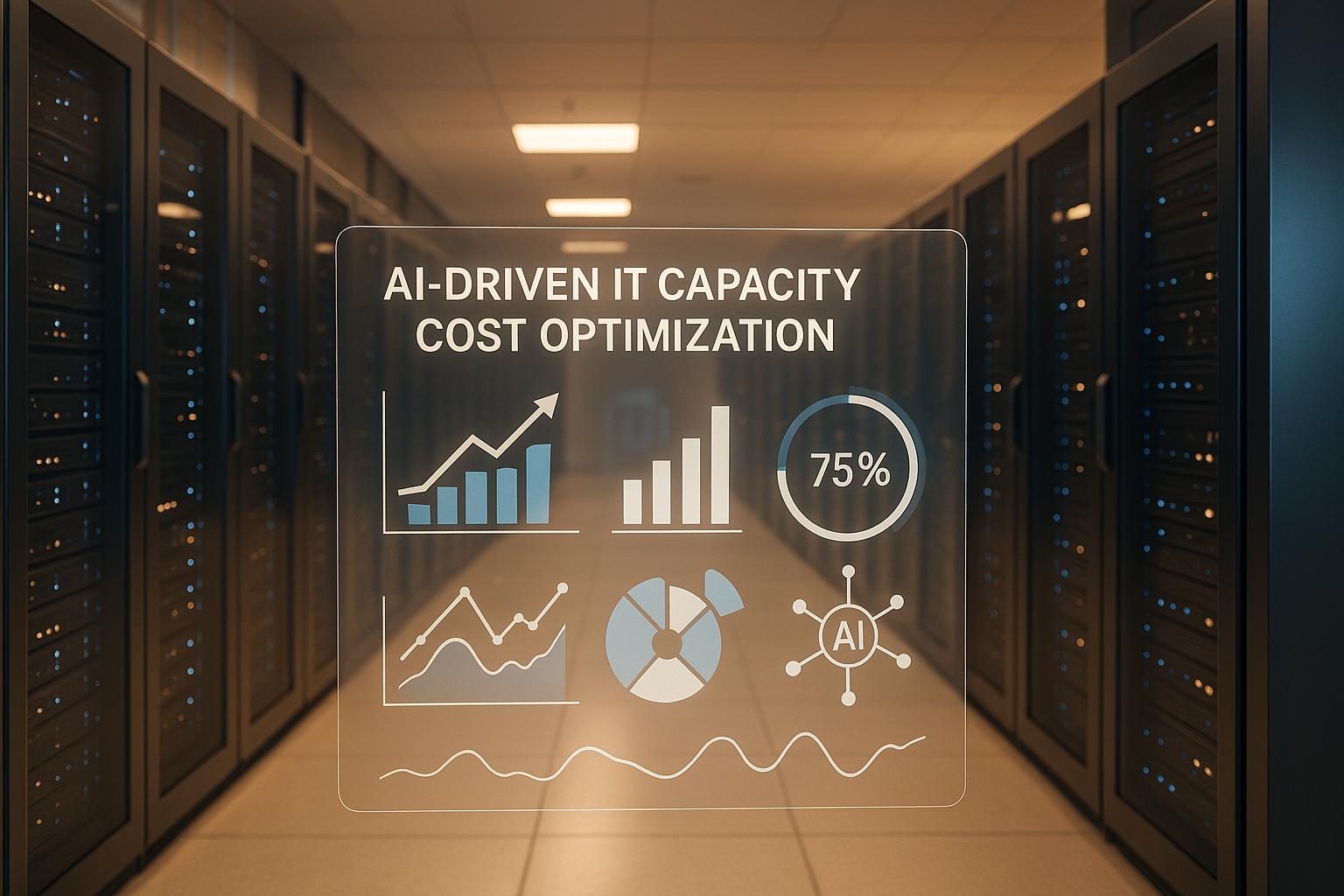- Faster Communication: AI tools like real-time translations and automated meeting summaries save time and improve clarity.
- Streamlined Workflows: Automation reduces repetitive tasks, freeing up 41% of the time spent on low-value work.
- Data-Driven Decisions: AI helps allocate resources effectively by analyzing team behaviors and project needs.
- Higher Productivity: Companies using AI report a 72% productivity boost compared to those that don’t.
Quick Wins with AI Tools:
- Translation Tools: Break language barriers while cutting translation costs by 90%.
- Meeting Assistants: Tools like Otter.ai summarize meetings, saving hours on documentation.
- Scheduling Tools: AI-powered calendars reduce scheduling conflicts by 60%.
AI isn’t just a tool - it’s reshaping how teams work together, making collaboration faster, smarter, and more efficient.
Reinventing Workplace Collaboration with AI
Common Team Collaboration Problems
Organizations often struggle with effective cross-functional collaboration, and the numbers back this up. Over 44% of employees report feeling frustrated due to inadequate communication practices. Let’s take a closer look at some of the key challenges that hinder team collaboration.
Poor Communication Between Teams
When teams fail to communicate effectively, it can lead to misaligned goals, unclear expectations, and delayed projects. The consequences of poor communication are especially stark in the healthcare industry. Between 1995 and 2004, communication breakdowns were identified as the top cause of sentinel events reported to the Joint Commission. In fact, medical errors stemming from communication failures would rank as the fifth leading cause of death in the U.S..
Some common barriers to effective communication include:
- Hierarchical barriers: Rigid structures can discourage open dialogue.
- Cultural differences: Misunderstandings arise when team members come from diverse backgrounds.
- Technical jargon: Overuse of specialized terms can confuse those outside a particular field.
But communication isn’t the only issue. Manual processes also create significant roadblocks.
Manual Process Bottlenecks
Repetitive tasks and manual workflows eat up valuable time. Teams lose an estimated 22% of their time to repetitive work, and employees spend as much as 60% of their time duplicating efforts. The consequences of these inefficiencies can be severe. Public Health England, for example, failed to report nearly 16,000 COVID-19 cases due to errors in manual processes. Similarly, Citi Bank incurred a nearly $1 billion penalty because of clerical mistakes.
To put it into perspective, people make roughly 10 errors for every 100 steps in a manual process. When spreadsheets are involved, error rates skyrocket to between 18% and 40%. These inefficiencies force teams into a reactive mode, making it harder to allocate resources effectively.
Resource Management Issues
Collaboration also depends on how well resources are managed. With 80% of organizations struggling to find and hire skilled professionals, existing teams often face mounting pressure. Resource challenges typically take the form of:
- Overlapping demands: Teams competing for limited resources.
- Poor visibility: Managers lacking a clear picture of resource availability.
- Misaligned priorities: Departments focusing on their own goals rather than the organization’s broader objectives.
The result? Nearly 75% of cross-functional teams are deemed dysfunctional.
"A lot of things you probably think are trust and team dynamic issues are actually failings of poor alignment."
These challenges highlight the importance of addressing both communication and operational inefficiencies to improve team collaboration.
AI Tools for Better Team Communication
Check out our AI for Businesses directory for a selection of tools designed to streamline operations. Below, we highlight AI tools that can directly improve team communication.
Translation and Accessibility Tools
Breaking language barriers is key to fostering effective collaboration across diverse teams. AI translation tools have made this easier, cutting translation costs by up to 90% while achieving impressive accuracy. These tools are constantly improving, delivering translations that feel more natural and human-like compared to older methods.
Take this example: A global logistics company used MachineTranslation.com to localize employee handbooks and safety protocols for teams across Asia, Europe, and South America. The result? Onboarding times dropped by 40%, and incident reports decreased by 25% due to clearer safety messaging.
How to make the most of AI translation tools:
- Focus on high-priority materials like onboarding guides and safety procedures.
- Develop a custom glossary to maintain consistent terminology.
- Combine AI translations with human review for critical or sensitive content.
Meeting Summary Tools
AI doesn’t stop at language translation - it also simplifies meeting documentation, bridging communication gaps even further. AI meeting assistants can record discussions, extract key points, and highlight decisions. For instance, Otter.ai has surpassed $100M in annual recurring revenue with its AI Meeting Agent suite, showcasing the rising demand for such tools.
Here’s a quick comparison of popular AI meeting tools:
| Feature Comparison | Jamie AI | Otter.ai | Fireflies.ai |
|---|---|---|---|
| Privacy Approach | Bot-free | Bot-based | Bot-based |
| Transcription Quality | High accuracy | Good | Decent |
| Language Support | 20+ languages | English, Spanish, French | Limited |
| Key Integration | Zoom, Teams | Slack, Salesforce | CRM tools |
"We tested several tools before settling on Bluedot and couldn't be happier. I didn't like the idea that there is this bot joining my calls as a note taker, which seemed to be sneakily integrated into my calendar."
- Bridget Harris, CEO and co-founder of YouCanBookMe
Calendar Management Tools
Adding to the mix, AI-powered scheduling tools help teams coordinate effortlessly across time zones. With employees spending an average of 4–5 hours per week on scheduling tasks, AI tools can slash that time by 60%.
A U.S.-based electric and gas utility tested AI scheduling for six weeks and saw impressive results:
- 75% fewer emergency schedule disruptions
- 67% reduction in job delays
- 80% fewer false truck rolls caused by scheduling conflicts
These tools operate 24/7, making it easier for global teams to sync up, no matter their time zones. They integrate smoothly with platforms like Google Calendar and Outlook, analyzing user behavior to suggest optimal meeting times while respecting team privacy settings.
AI Workflow Automation Benefits
AI automation is reshaping how teams work, with organizations experiencing up to a 40% increase in productivity when implemented strategically. By simplifying cross-functional collaboration, AI enhances workflows and integrates seamlessly with communication tools, creating a robust framework for teamwork.
Smart Task Assignment
AI takes the guesswork out of task distribution by analyzing team members' expertise, workload, and past performance. This ensures tasks are assigned to the right people at the right time, reducing delays and keeping projects on track.
"AI automation is creating real value across the business environment, from HR and IT to sales and marketing."
Document Management
Did you know that 80% of enterprise data is unstructured? AI-powered document management systems don't just store files - they transform how organizations handle information. These systems automate tasks like document classification, data extraction, and organization, reducing errors and saving time.
Take Adobe Experience Cloud, for example. It uses AI to:
- Automatically classify documents by type and department
- Extract key data points for quick access
- Maintain version control to prevent confusion
- Detect and flag potential security risks in real time
"AI is changing document management from a basic storage system into an intelligent tool that can understand, organize, and automate your document processes." – Adobe Experience Cloud Team
Automated Compliance Checks
AI is also making compliance easier and more reliable. For instance, in January 2025, the FDA issued draft guidance to enhance the transparency and credibility of AI models used in drug development.
AI compliance tools now offer features like:
- Real-time monitoring to catch compliance issues during document creation and sharing
- Automated policy enforcement to ensure regulations are met
- Role-based access controls to manage document permissions securely
Organizations that have implemented AI automation report a 91% improvement in operational visibility.
With AI workflow automation spending expected to surpass $630 billion by 2028, it's clear that as teams grow more distributed and processes become increasingly complex, AI will remain an essential tool for streamlining collaboration and boosting efficiency.
sbb-itb-bec6a7e
Using Data to Improve Team Performance
AI-driven analytics are transforming how organizations enhance team collaboration by turning data into actionable insights. These insights allow for smarter decisions that not only streamline workflows but also boost overall team effectiveness through strategic analysis and timely adjustments.
Resource Planning
AI takes the guesswork out of resource planning by evaluating team capacity, skill sets, and availability in real time. A practical example of this is in cloud migration projects, where AI assigns tasks based on current workloads and shifts extra capacity to high-priority areas. This approach ensures that potential problems are identified early, preventing delays and inefficiencies.
Early Problem Detection
AI tools are instrumental in spotting issues before they escalate and disrupt performance. For context, two-thirds of managers report needing more support to manage performance effectively. AI steps in to fill this gap by offering critical insights, such as:
| Area | Function | Benefit |
|---|---|---|
| Communication Patterns | Identifies bottlenecks and workload imbalances | Helps adjust workflows proactively |
| Risk Assessment | Analyzes historical data to flag risks | Lowers the chance of project failures |
| Performance Metrics | Tracks real-time data | Enables immediate corrective actions |
Take LivePerson, for instance. By using AI tools like Betterworks' Feedback Assist and Feedback Summary, managers have cut performance review times by 50–75% without sacrificing quality. This kind of early detection supports ongoing performance monitoring, making it easier to keep teams on track.
Team Performance Tracking
AI analytics provide a level of visibility into team operations that was previously hard to achieve. This transparency helps organizations pinpoint inefficiencies and take corrective action across departments. With 35% of managers already leveraging AI to improve efficiency, the shift toward data-driven management is well underway. For example, Neobank Northmill utilized AI-powered customer segmentation to achieve a 30% boost in conversions.
"With data and GenAI, we can remove the bias, remove the opinions, and actually give employees actionable feedback." – Doug
Steps to Add AI to Your Team Workflow
Integrating AI into your team's workflow can reshape how collaboration happens, making processes smoother and more efficient.
Identify Key Problems
Start by identifying the main challenges your team faces in collaborating effectively. This means analyzing where things tend to slow down or go wrong and figuring out how AI might help address these issues.
| Area | Questions to Ask | Indicators to Look For |
|---|---|---|
| Communication Flow | Where are the bottlenecks? | Delays in responses, frequent misunderstandings |
| Task Management | Which tasks are repetitive? | High time spent on manual work, error rates |
| Resource Allocation | Are resources being used efficiently? | Project delays, overlapping responsibilities |
Use surveys to dig deeper into how tasks are handled and where interactions could improve. Pay special attention to areas that have a big impact on productivity but consistently receive low satisfaction ratings. These are your key targets for improvement.
Once you’ve pinpointed the challenges, it’s time to pick the right AI tools.
Choose AI Tools
Choosing the right AI tools is all about matching them to your team's specific needs. Platforms like AI for Businesses can help you explore tools designed for collaboration. Keep these factors in mind:
- Integration: Ensure the tools work seamlessly with your current systems.
- Ease of Use: Look for tools that your team can adopt without a steep learning curve.
- Security and Compliance: Verify that the tools meet your organization’s security and regulatory requirements.
Once you’ve selected your tools, the next step is preparing your team to use them effectively.
Team Training Plan
A well-structured training plan is essential for successful AI adoption.
| Phase | Focus | Training Method |
|---|---|---|
| Foundation | Basic understanding of AI | Interactive workshops |
| Practical | Role-specific applications | Hands-on training sessions |
| Advanced | Specialized features | Mentorship and expert guidance |
Consider implementing a buddy system to pair experienced users with those still learning. Use performance metrics to evaluate and refine your training approach. Additionally, create a shared knowledge base and host regular workshops to keep the team updated on best practices. Teams that invest in ongoing AI education often see better adoption rates and stronger collaboration across departments.
Conclusion: Next Steps for AI Collaboration
The journey toward effective AI integration doesn't stop at implementation - it requires a shift in how organizations approach culture and strategy. By 2025, AI is expected to displace 85 million jobs while creating 97 million new ones, marking a significant transformation in the workforce. This change brings both challenges and opportunities.
"It's not that AI is coming to take anybody's job, but the workers of the future who know how to leverage machines to accelerate tasks will be." - Christina Hartikainen, Director of Learning at ICAgile
To succeed, organizations need to focus on three key areas:
| Focus Area | Action Steps | Outcome |
|---|---|---|
| Culture Building | Encourage transparency and open discussions about AI | Builds trust and drives adoption |
| Skills Development | Offer continuous training and upskilling | Strengthens team capabilities |
| Ethical Framework | Define clear guidelines for AI use | Ensures responsible implementation |
These pillars are essential for turning AI's potential into measurable improvements. For instance, JPMorgan Chase demonstrated this in 2023 by combining efforts from risk analysts, data scientists, and compliance teams to cut fraud by 15-20%.
Looking ahead, AI is projected to contribute $13 trillion to the global economy by 2030, boosting global GDP by 1.2% annually. To harness this potential, organizations should focus on fostering an AI-ready culture that prioritizes human values. Transparent communication, robust training programs, and ethical guidelines ensure AI enhances human capabilities, driving productivity and innovation.
FAQs
How can AI help cross-functional teams overcome language and cultural differences?
AI is transforming how cross-functional teams overcome language and cultural barriers. With real-time translation tools, team members can communicate effortlessly, no matter their native language. This ensures that everyone feels included and understood during discussions, making collaboration smoother.
Beyond language, AI also offers insights into cultural subtleties, helping teams avoid misunderstandings and build stronger working relationships. On top of that, AI-powered tools can analyze communication patterns, spotting recurring issues so teams can tackle them head-on. By simplifying interactions and encouraging inclusivity, AI enables diverse teams to collaborate more efficiently, driving both productivity and fresh ideas.
How can businesses use AI tools to improve teamwork and streamline workflows?
To make teamwork more effective and workflows smoother with AI tools, businesses should start by promoting a learning-first mindset. Provide training sessions and create spaces where employees can discuss and share their experiences with AI during team meetings. This not only builds confidence but also ensures everyone understands how AI can enhance their day-to-day tasks.
AI can also be a game-changer for simplifying decision-making. Tools that offer real-time data and actionable insights, such as AI-powered dashboards, allow teams to stay on the same page, spot trends, and adapt quickly to changes. This leads to better collaboration and more efficient operations.
Lastly, consider automating repetitive tasks like scheduling, data entry, or generating reports. By taking these time-consuming duties off your team’s plate, they can focus on more strategic and creative projects, ultimately driving productivity and encouraging stronger teamwork across departments.
How can businesses ensure ethical and compliant use of AI in team collaboration?
To use AI ethically and responsibly in team collaboration, businesses need a well-defined AI governance framework. This means putting policies in place to safeguard data privacy, ensure fairness, and keep AI operations transparent. Regular reviews and audits are key to spotting potential risks and making sure these standards are met.
Creating a workplace culture that emphasizes ethical AI use is just as important. Companies can achieve this by training employees on ethical practices and involving a range of perspectives in AI development. These efforts help businesses align AI-powered collaboration with ethical guidelines and regulatory expectations.


